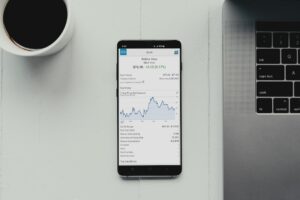The Basics of Forex Trading: A Beginner’s Guide
Forex trading, also known as foreign exchange trading, is the process of buying and selling currencies in the global marketplace. It is the largest and most liquid financial market in the world, with an average daily trading volume of over $6 trillion. Forex trading offers numerous opportunities for individuals to profit from the fluctuations in currency prices, but it can also be complex and risky for beginners. In this beginner’s guide, we will explore the basics of forex trading and provide essential information for those looking to get started in this exciting market.
Understanding the Forex Market
The forex market operates 24 hours a day, five days a week, across major financial centers worldwide. It is a decentralized market, meaning that there is no central exchange or regulatory body. Instead, trading is conducted electronically over-the-counter (OTC) through an extensive network of banks, financial institutions, and individual traders.
Currency Pairs and Quotes
In forex trading, currencies are always quoted in pairs. The first currency in the pair is called the base currency, while the second currency is known as the quote currency. For example, in the EUR/USD currency pair, the euro is the base currency, and the US dollar is the quote currency. The exchange rate represents the value of one currency relative to another. Traders aim to profit by speculating on the direction in which the exchange rate will move.
Market Participants
The forex market comprises various participants, each with different motivations and strategies. The major players include central banks, commercial banks, hedge funds, multinational corporations, and retail traders. Central banks, such as the Federal Reserve in the United States, play a crucial role in influencing exchange rates through monetary policy. Commercial banks facilitate currency transactions for their clients, while hedge funds and multinational corporations engage in forex trading for speculative and hedging purposes. Retail traders, including individual investors, account for a smaller portion of the market but have gained significant popularity in recent years due to the accessibility of online trading platforms.
Leverage and Margin Trading
One of the key features of forex trading is leverage, which allows traders to control larger positions with a smaller amount of capital. Leverage is expressed as a ratio, such as 1:100 or 1:500. For example, with a leverage of 1:100, a trader can control a position worth $100,000 with a margin deposit of $1,000. While leverage can amplify profits, it also increases the risk of losses. Therefore, it is crucial for beginners to understand the concept of margin trading and use leverage responsibly.
Technical and Fundamental Analysis
Forex traders utilize two main types of analysis to make trading decisions: technical analysis and fundamental analysis. Technical analysis involves studying historical price data and using various indicators and chart patterns to identify trends and predict future price movements. Fundamental analysis, on the other hand, focuses on economic and political factors that can influence currency values. This includes monitoring economic indicators, such as interest rates, GDP growth, employment data, and geopolitical events. Both types of analysis are essential for making informed trading decisions.
Risk Management
Managing risk is a fundamental aspect of forex trading. It involves implementing strategies to limit potential losses and protect capital. Traders can use various risk management tools, such as stop-loss orders, which automatically close a position if it reaches a certain price level. Additionally, diversification, proper position sizing, and disciplined trading are crucial for mitigating risks and preserving capital in the volatile forex market.
Choosing a Forex Broker
Selecting a reputable forex broker is essential for beginners. A broker acts as an intermediary between the trader and the market, providing access to trading platforms, market data, and execution services. When choosing a broker, factors to consider include regulation, trading platforms, spreads and commissions, customer support, and educational resources. It is recommended to choose a broker regulated by a reputable financial authority to ensure the safety of funds and fair trading conditions.
Conclusion
Forex trading offers significant opportunities for individuals to profit from currency fluctuations. However, success in forex trading requires a solid understanding of the basics, as well as continuous learning and practice. By grasping the concepts of currency pairs, quotes, market participants, leverage, analysis techniques, risk management, and selecting a reliable broker, beginners can start their forex trading journey on the right foot. Remember, trading forex involves risks, and it is crucial to approach it with caution and discipline.





